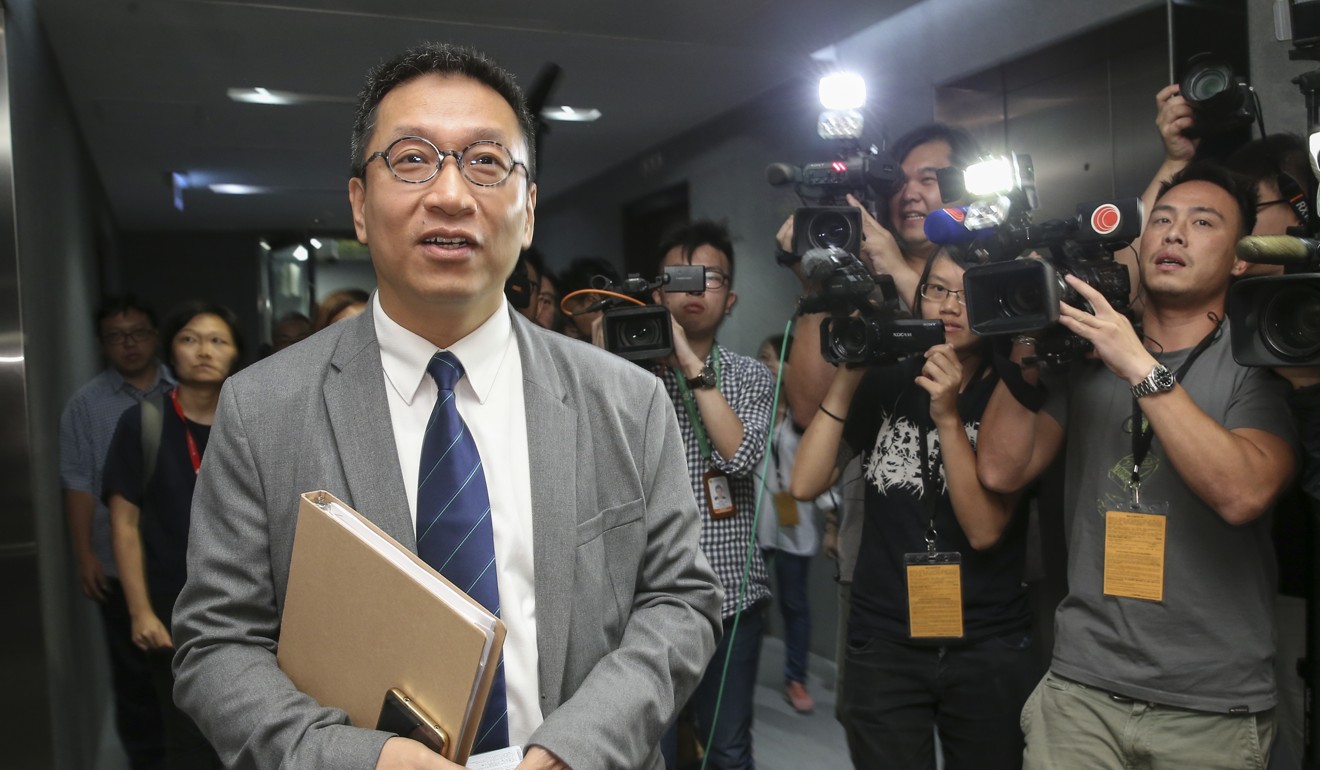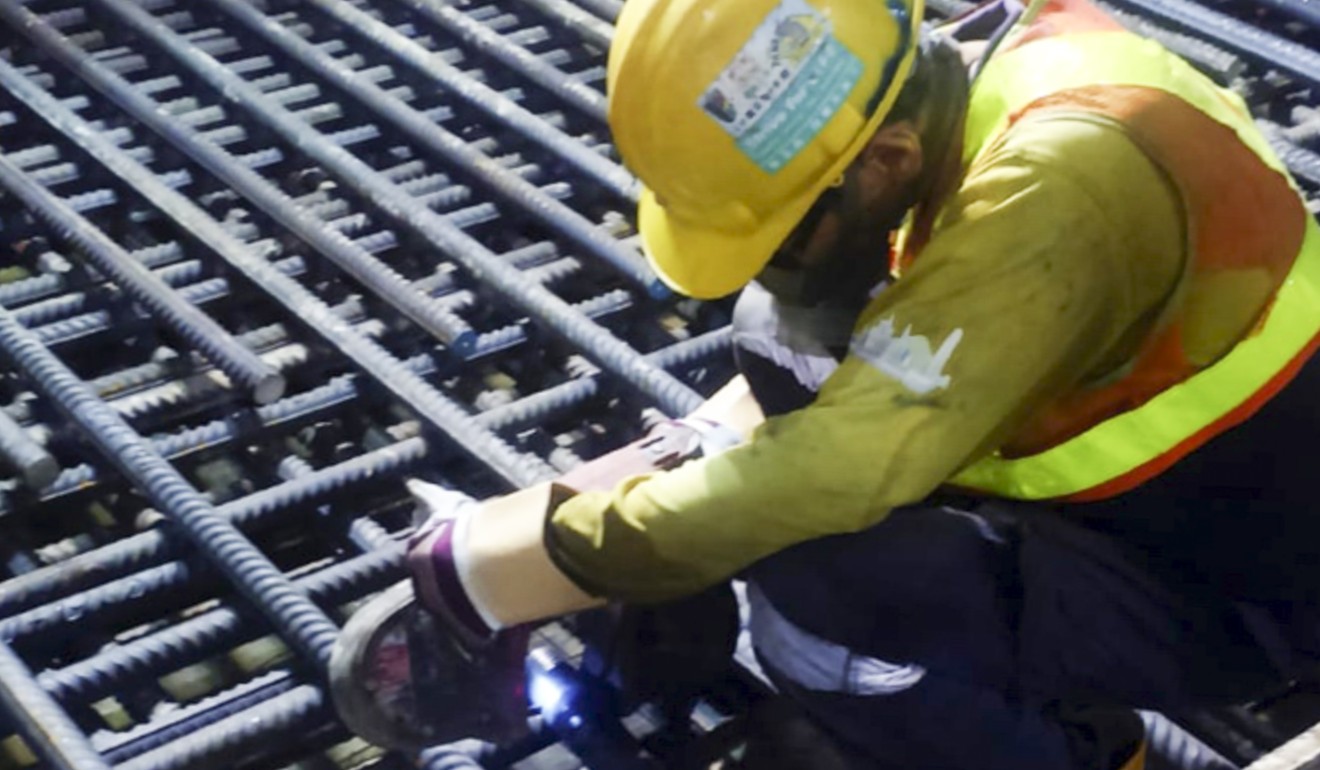
Hong Kong rail giant MTR Corporation reveals another case of subsidence at station platform
In separate development, whistle-blower tells lawmakers senior company official knew about shoddy work on city’s most expensive rail project at least 18 months ago
Hong Kong’s embattled railway operator, already reeling from a series of construction scandals, revealed on Friday it had asked for the suspension of foundation work at a housing development near a station where another case of subsidence was discovered.
The third such case in less than a month came as a whistle-blower told the Legislative Council that a senior MTR Corporation official, projects director Philco Wong Nai-keung, knew about shoddy work on the city’s most expensive rail project as early as the end of 2016 – not when the scandal broke out two months ago as he had claimed.
In the latest case, the MTR Corp said its railway protection unit had noticed subsidence at monitoring points at the end of the southbound platform of Tai Wai station and near an overhead line mast early on Thursday.
“Settlement had for the first time reached the preset limit of 20mm for works suspension,” the company said in a statement.

It told property giant New World Development, which is handling a residential project nearby, to suspend foundation works in the relevant area. The developer said its contractor had complied with the order, while government inspectors found the station itself to be structurally safe.
Investigation into MTR Corp blocked by lawmakers with business links
Civil and structural engineer Simon So Yiu-kwan said subsidence in the recent cases was probably due to piling work at construction sites near stations. He explained that piling produced strong vibrations, which could lead to subsidence of nearby buildings, and while work could not be done in advance to prevent it, the problem should be monitored and rectified if it became serious enough.
So criticised the MTR Corp’s handling of the three cases, saying it was unsatisfactory and lacked transparency, including a failure to clarify whether there were settlement problems with tracks at Tai Wai.
A government spokesman said foundation works causing settlement issues at nearby structures was “not uncommon”.
In the case of Tai Wai station, the Buildings Department had inspected the section of platform and mast and confirmed they were structurally safe, the spokesman said. The Electrical and Mechanical Services Department had also confirmed the tracks complied with safety standards.
The subsidence incidents emerged after revelations about shoddy work and alleged cover-ups during construction at three stations along the HK$97.1 billion (US$12.4 billion) Sha Tin-Central link.
Jason Poon Chuk-hung, director of subcontractor China Technology Corporation, told lawmakers at a railway subcommittee meeting on Friday that senior MTR officials had known about work to cut corners at the link’s Hung Hom station long before the scandal broke in May.
No one from the MTR Corp’s senior management attended the meeting, but four general managers in charge of the link turned up.

Poon’s firm, hired by main contractor Leighton Contractors (Asia), was responsible for concreting work on the platform where steel bars had been cut short to make it seem as though they had been screwed correctly into couplers.
Subcontractor Fang Sheung Construction, which undertook the steel work, had told the MTR Corp that its workers were instructed by Leighton to carry out the corner cutting, but Leighton denied any direct knowledge of it.
Shoddy rail work probe to feature British engineer from 2014 inquiry
Poon said his workers first alerted him to the problem in July 2015, after which there were about three or four occasions when Aidan Rooney, the MTR Corp’s general manager for the rail link, asked him about the bar cutting during joint visits to the station.
He said frontline MTR staff were also told about the problems, and estimated that more than 1,000 bars were affected, rather than about 20 as suggested by the rail operator.
“Since Aidan is directly under the MTR’s projects director Philco Wong Nai-keung, my understanding was that the MTR’s senior executives would also know about this,” he told lawmakers.

As projects director, Wong is accountable to MTR chief executive Lincoln Leong and the board for the delivery of all major capital projects including the Sha Tin-Central link.
Poon said that during a phone conversation with Wong at the end of 2016 he was given the impression that the projects director already knew about the bar-cutting work at Hung Hom station.
“During the conversation I raised the bar-cutting issue with him and he said he would follow it up. My understanding was that he already knew about this issue,” he said.
Rail scandal firm dodges public scrutiny while lobbying behind the scenes
Poon said that in January last year he had finally raised the issue with senior executives of Leighton by an email that the contractor forwarded to the MTR Corp.
In a report to the government on June 15, the rail giant admitted it received the email from Leighton in January and it was “further escalated to the projects director in a meeting”.
According to Poon, the version of events by Wong – who publicly said he had only learned of the shoddy work from media reports in May – was untrue.

“From this email correspondence, we can establish that the MTR senior management knew about this issue in January 2017 at the latest,” said Poon, who also slammed the railway operator for refusing to include his statements in its report to the government.
In another development, MTR general manager Jason Wong admitted that steel bars were not connected correctly to joints at the station’s 135-metre north approach tunnels but concrete work was completed in March. The faulty work was unearthed due to persistent seepage problems at some connection joints.
MTR avoids censure over use of waste on Sha Tin-Central rail link
Under its procedures, no concreting work could be carried out unless the MTR certified that steel work complied with standards. When asked by lawmakers who gave the order for the concreting work, Wong said they did not have any available information.
“There have been inadequacies about our supervision of the project works. If we find out that our colleagues have done something wrong we’ll follow it up,” he said.


